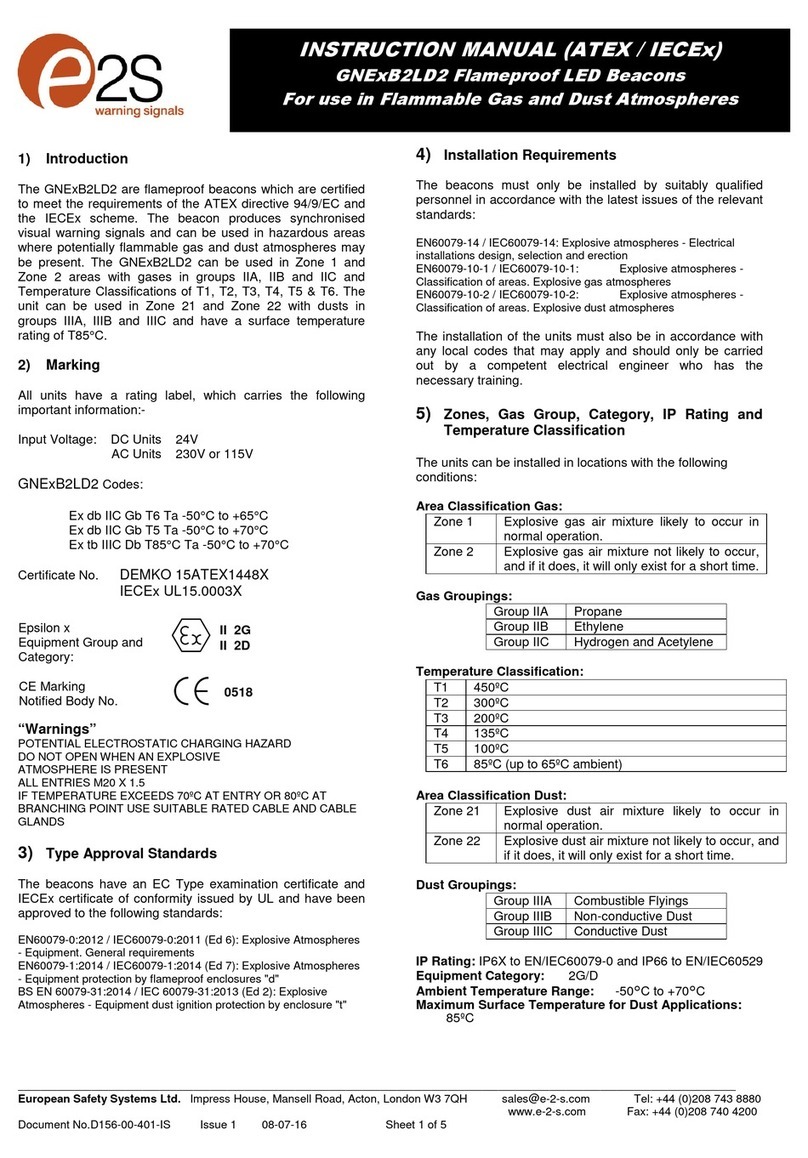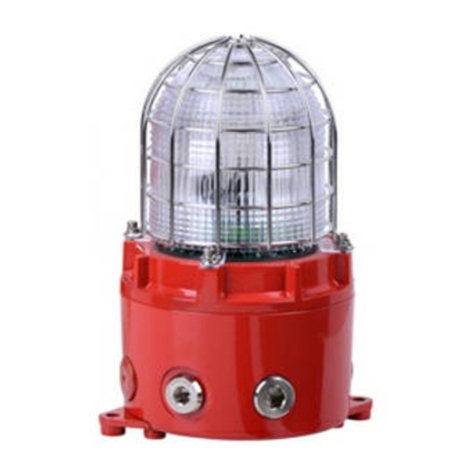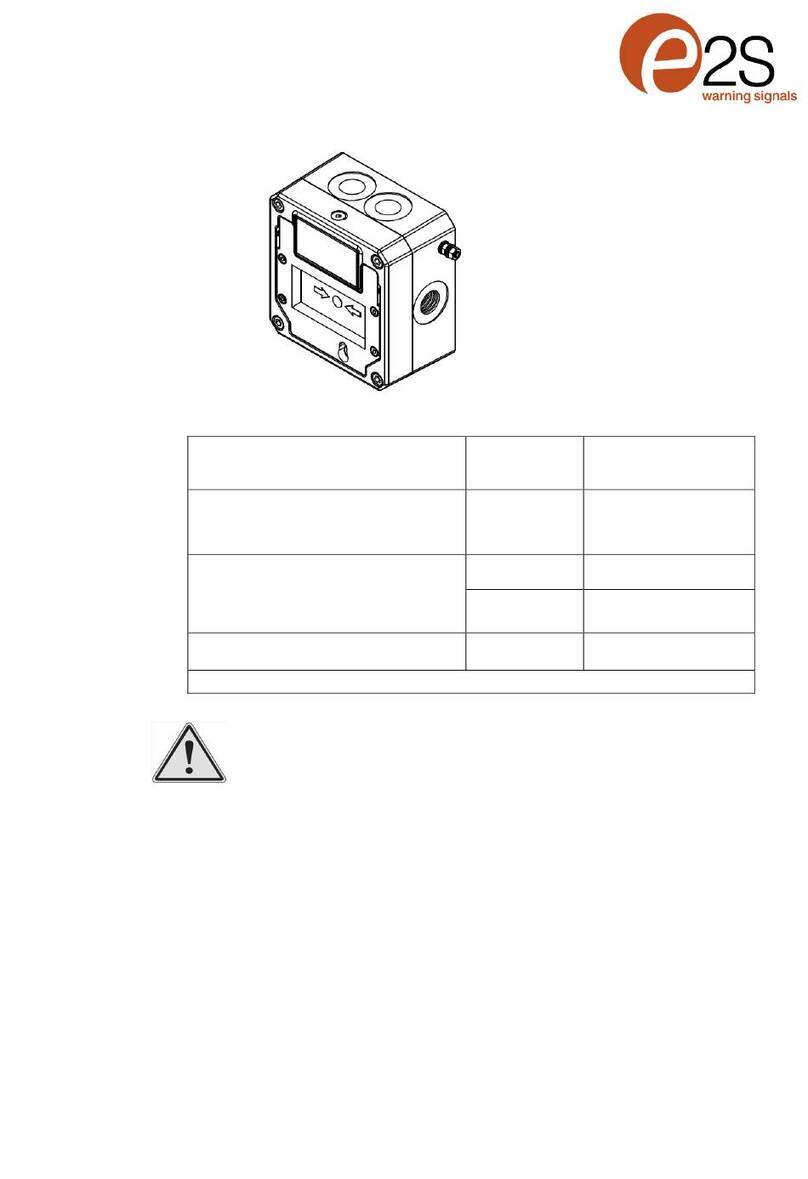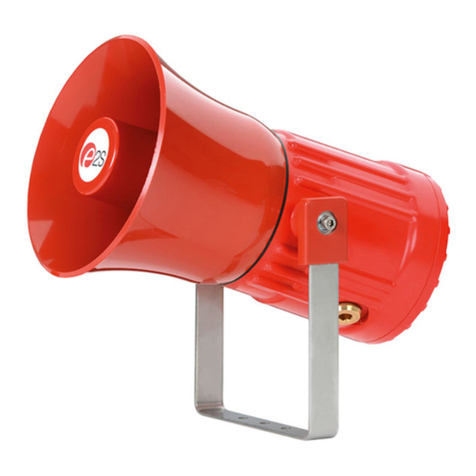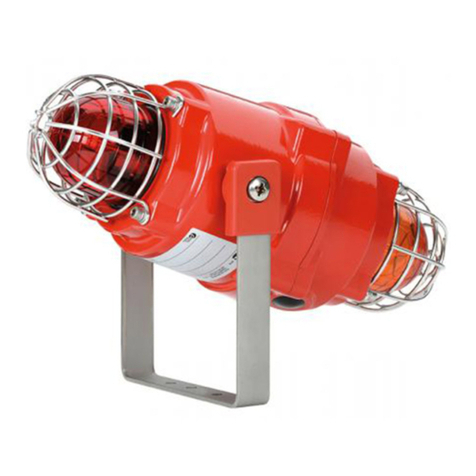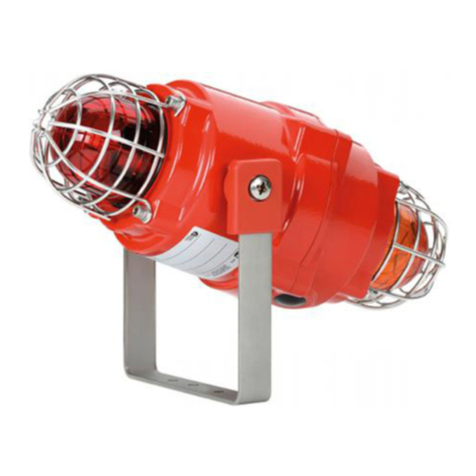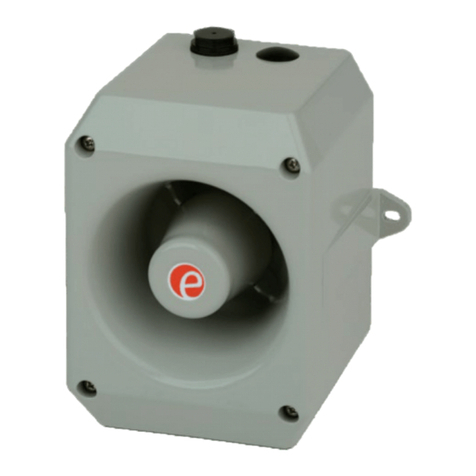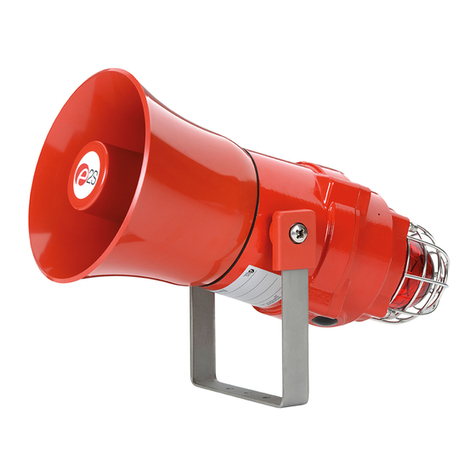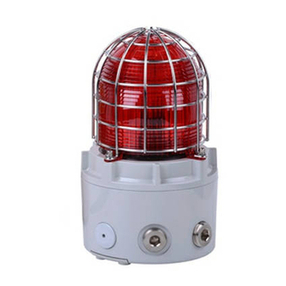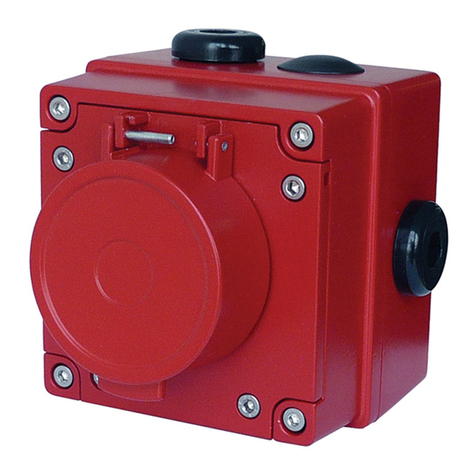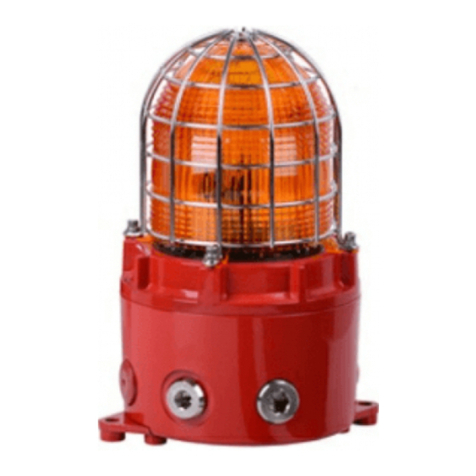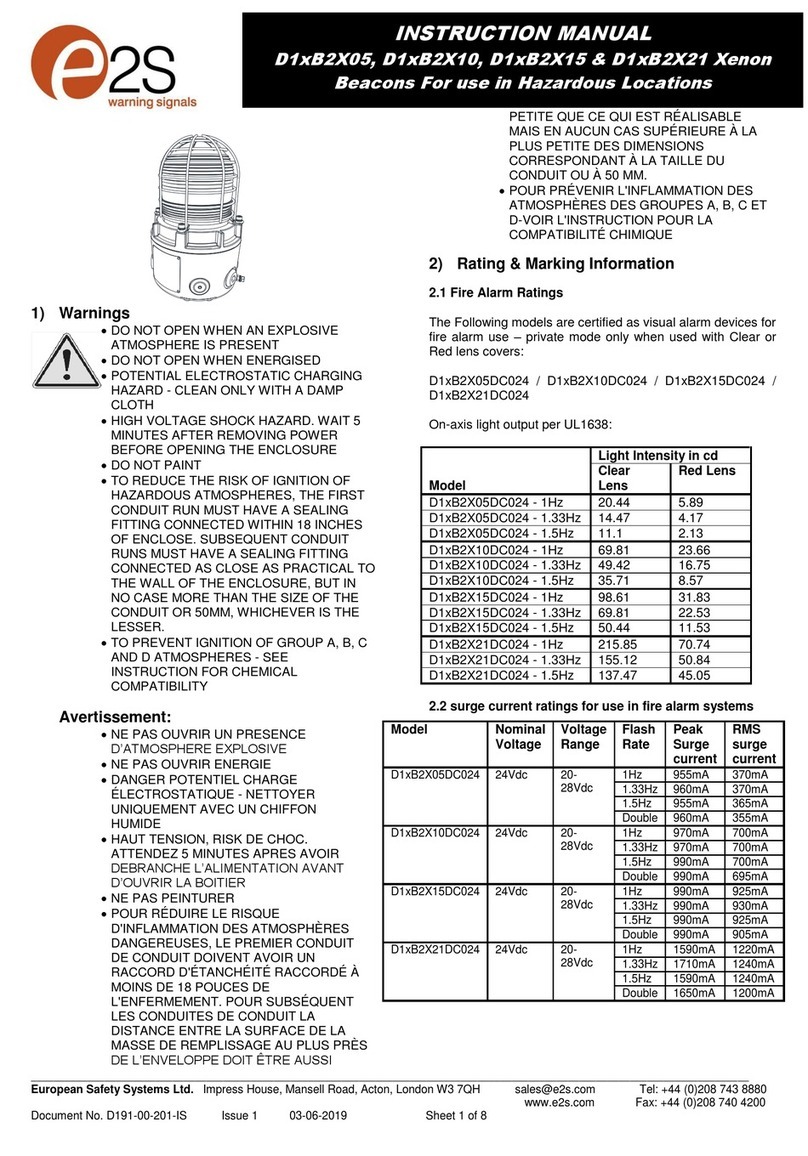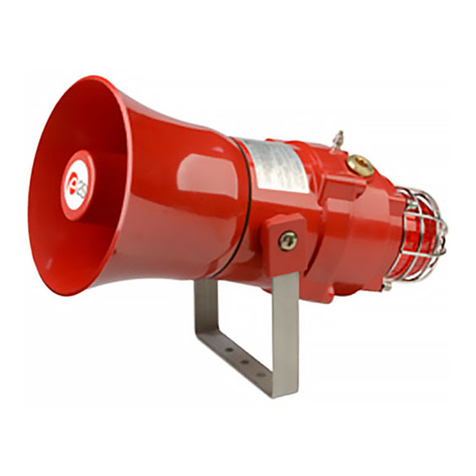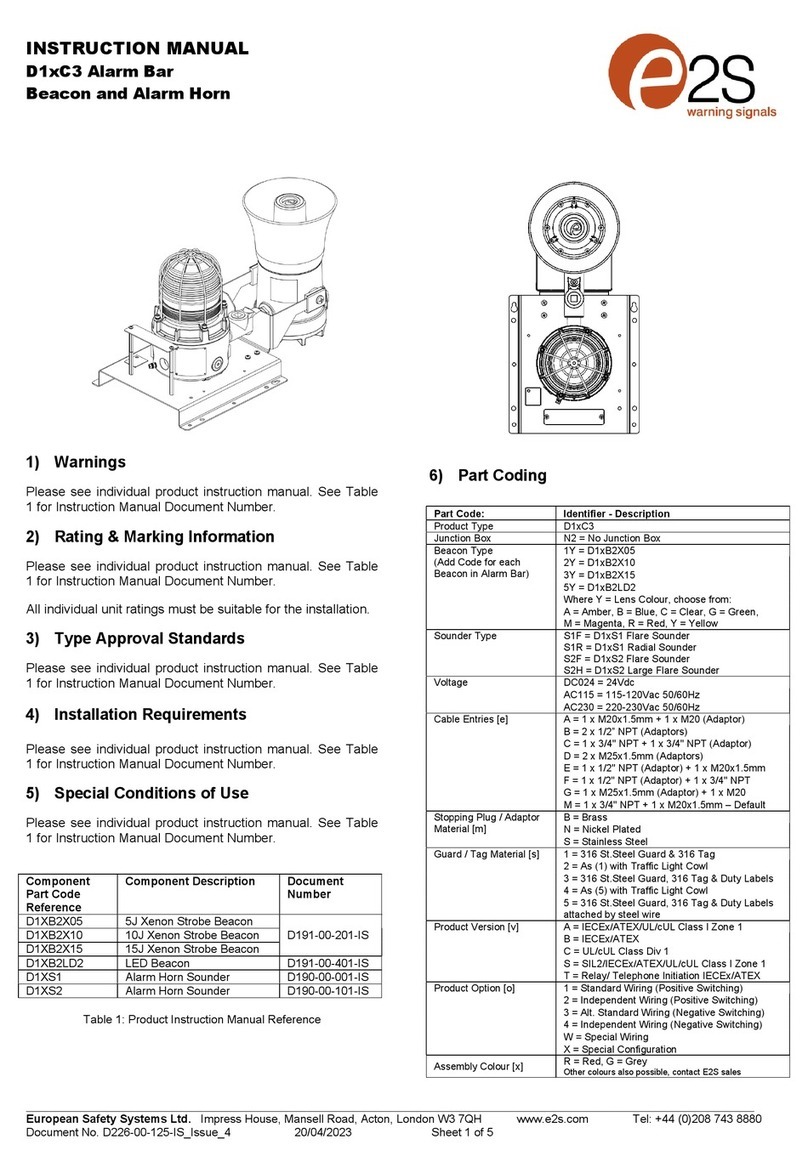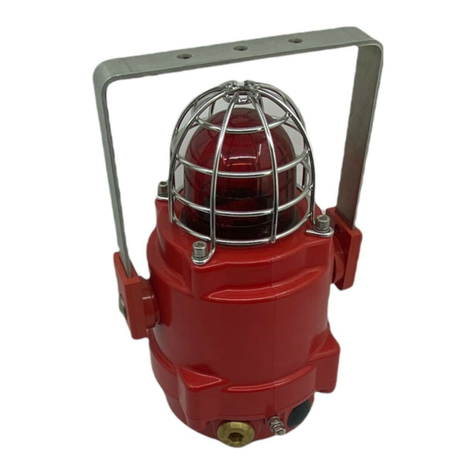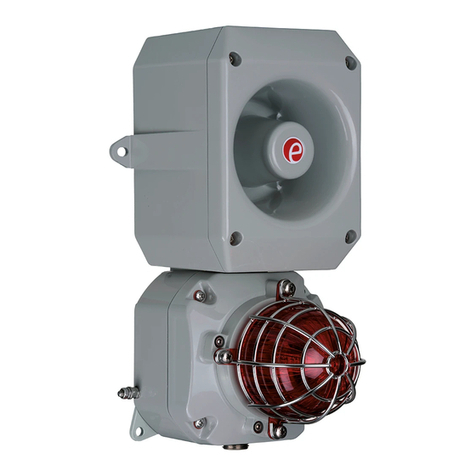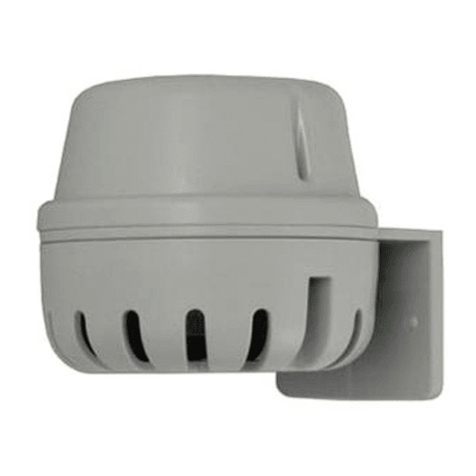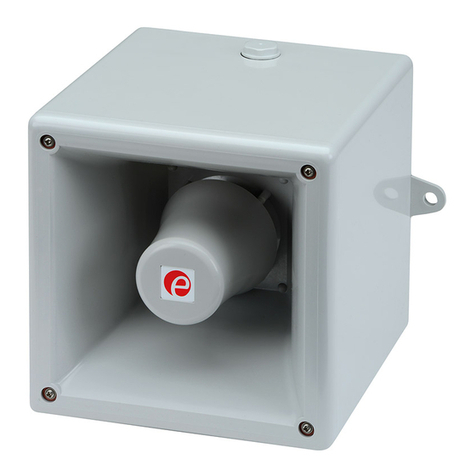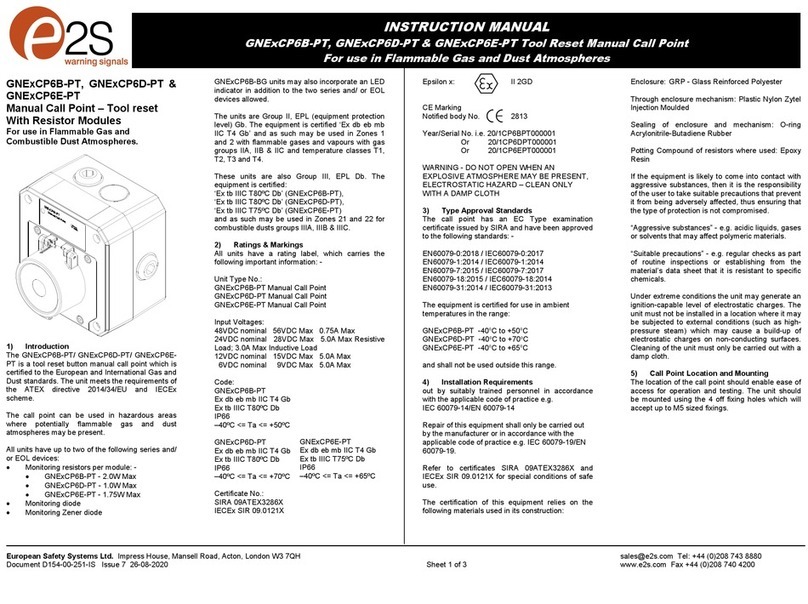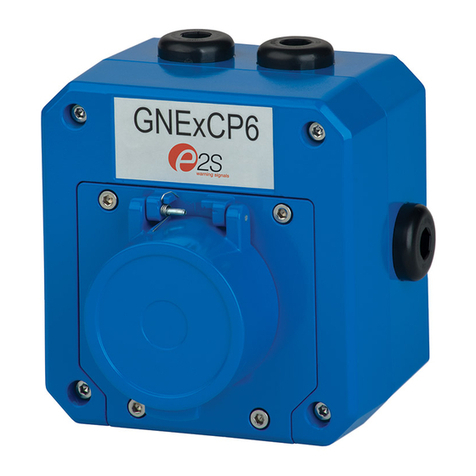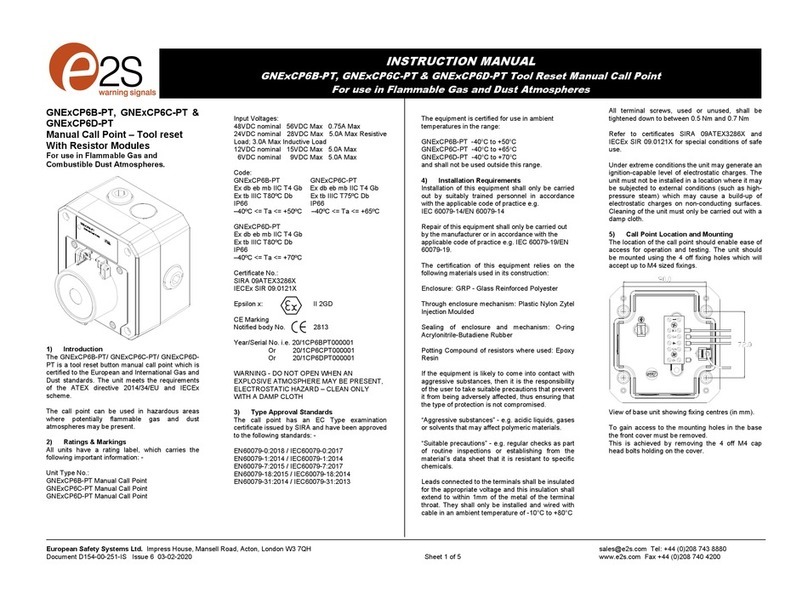_______________________________________________________________________________________________________________________________
European
Safety
Systems
Ltd.
Impress House, Mansell Road, Acton, London W3 7QH [email protected] Tel: +44 (0)208 743 8880 www.e-2-s.com Fax: +44 (0)208 740 4200
Document No. D197-00-102-IS Issue B 16-06-17 Sheet 5 of 17 (5)
Power relay RLY1-1 will be open whilst SIL 2 relay RLY1-2
will be closed contact between terminals 1 & 2.
If power is disrupted the SIL 2 unit will go into Fault mode, in
fault mode the Power relay RLY1-1 will close whilst SIL 2
relay RLY1-2 will become open circuit between terminals 1 &
2.
Active Mode –This is where the power is in normal polarity,
positive (+) supplied to the positive (+) beacon terminal and
negative (–ve) is supplied to the negative (–ve) beacon
terminal.
In this mode the beacon will flash giving the warning signal,
the SIL 2 unit is actively checking the beacons function for
flash output and beacon controller signal generation to the
right flash frequency.
Power relay RLY1-1 will be open whilst SIL 2 relay RLY1-2
will be closed contact between terminals 1 & 2.
The SIL 2 unit will also check for signal polarity.
If a fault is found the SIL 2 unit will go into Fault mode.
If power is disrupted the SIL 2 unit will go into Fault mode, in
fault mode the Power relay RLY1-1 will close whilst SIL 2
relay RLY1-2 will become open be circuit between terminals
1 & 2.
Fault modes - The fault modes listed 13-1 & 13-2 below will
make the SIL 2 unit change the state of the fault relays
In fault mode the Power relay RLY1-1 will close whilst SIL 2
relay RLY1-2 will become open be circuit between terminals
1 & 2.
13-1 Beacon Failure
•Flash Failure –No Flash detected
•Beacon Controller failure –No flash trigger pulse
detected
•Flash Rate Failure –Regular 1 Hz flash cycle erratic
Resetting Failure - It is possible that the SIL 2 unit can be
reset by powering the unit off for a period greater than 20
seconds. On restarting the unit and running through the
commissioning cycle, the fault may clear. It is necessary to
run the test function cycle again to see if the fault is still
evident. If the relays activate again the unit must be checked
as it is showing a failure and may not be functioning correctly.
13-2 Power Failure / SIL 2 Failure
•SIL 2 Controller failure –Internal function and
system checking flags fault
•Rapid Power cycling –System indicates power
instability
•Total Power Failure
Resetting Failure - It is possible that the SIL 2 unit can be
reset by hard resetting the unit using the reset jumper within
the unit (see section 21) on hard resetting.
On restarting the unit and running through the commissioning
cycle, the fault may clear. It is necessary to run the test
function cycle again to see if the fault is still evident. If the
relays activate again the unit must be checked as it is
currently showing a failure and may not be functioning
correctly.
Commissioning System - Functional start-up of System
(Normally in reverse polarity mode)
When Commissioning system the power must not be
disrupted to the SIL 2 Unit within the unit’s initialization cycle
which is 5 seconds.
Once past this period the SIL 2 system is fully operational
and will be in monitoring the beacon and power in Standby
mode.
The relay RLY1-2 on the SIL 2 unit will only remain open for a
maximum of 1 second on commissioning start-up.
Then they will close contact 1 & 2 showing healthy operation
and only open in the event of a fault or power down.
System Testing (Active Mode normal polarity)
The SIL 2 system will remain monitoring the power in standby
mode until the polarity is changed to normal mode to enable
an active system for beacon functional testing.
Important: - The polarity must be held in active mode for a
period in excess of 15 seconds to ensure a full system check
is performed.
Whilst the system is being checked the beacon controller and
flash pulses are monitored and checked for correct pattern
timing.
Once the test period has been completed the unit can be
switched back to standby mode by reversing the polarity.
If no faults have been found during the test the relays will
remain in there steady state.
The SIL 2 unit will continue to monitor the power and mode.
Important: - The automated test cycle must be
undertaken on at least a weekly basis to maintain the SIL 2
units reliability.
System Activation (Active Mode normal polarity)
The SIL 2 system will remain monitoring the power in standby
mode until the polarity is changed to Active mode to enable
an active system for beacon to function as a warning
signaling device.
Important :- The polarity must be held in active mode for a
period in excess of 15 seconds to ensure a full system check
is performed whilst in alarm mode, although it is expected
that during a system activation this period will be significantly
greater.
Note :- The fault indication signal on TB1 can take up to 1.5
seconds to indicate system fault.

